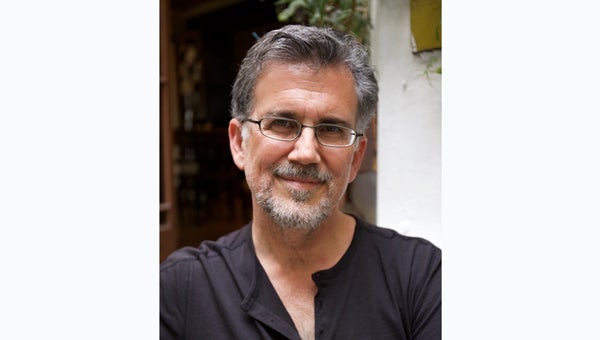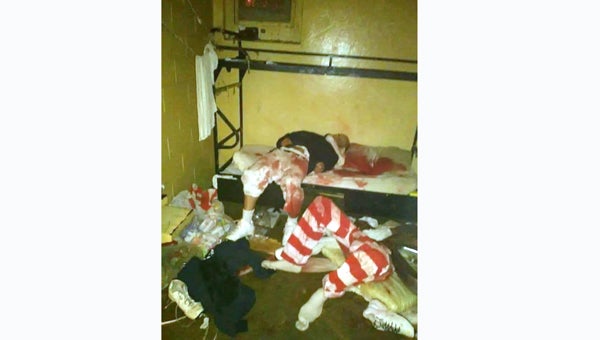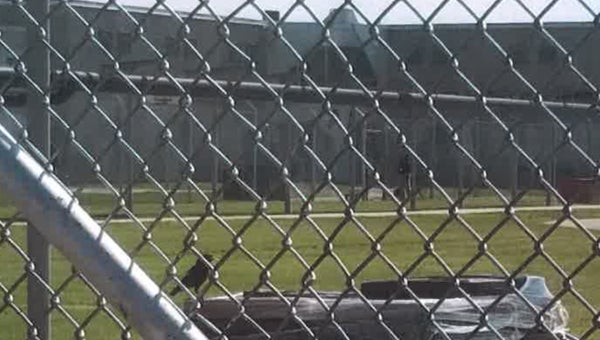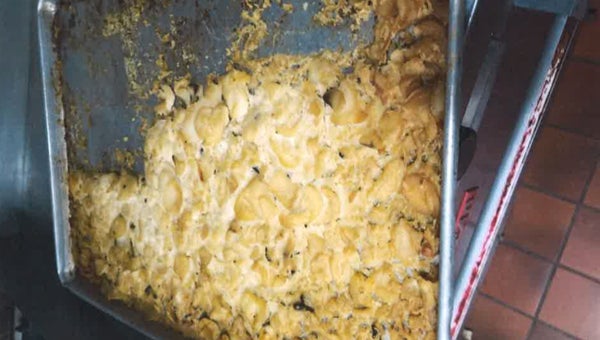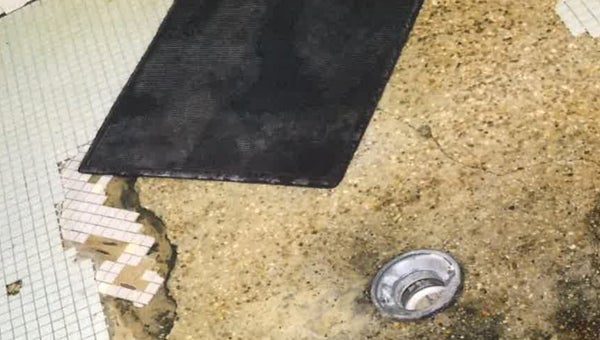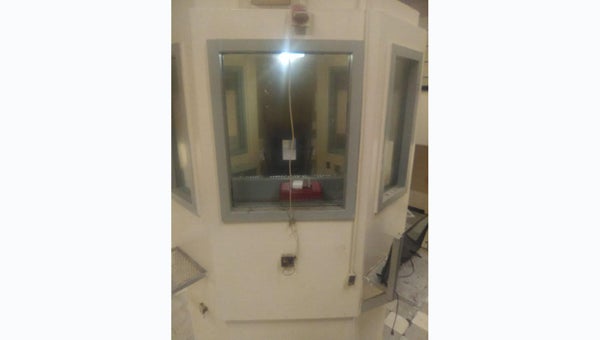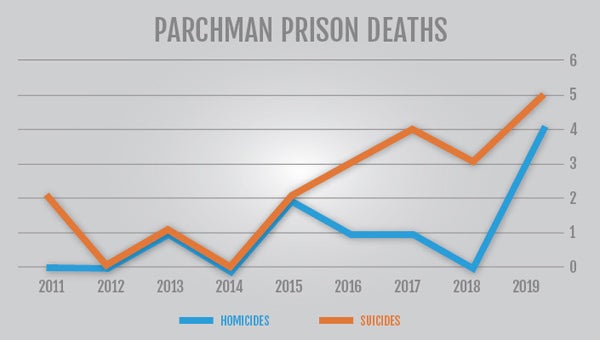Lawmakers refused to increase an infamous prison’s funding. Then, chaos erupted
Published 2:05 pm Wednesday, January 8, 2020
Understaffed, underfunded and plagued by gang violence, inmates in Mississippi’s Parchman prison have been living in deadly conditions that state lawmakers knew about for decades. Now, everyone is paying the price.
By Jerry Mitchell,
Mississippi Center for Investigative Reporting
This article was produced in partnership with the Mississippi Center for Investigative Reporting, which is a member of the ProPublica Local Reporting Network.
ProPublica is a nonprofit newsroom that investigates abuses of power. Sign up to receive our biggest stories as soon as they’re published.
One prisoner strangled another to death while other inmates cheered the killing. Two convicts escaped a dilapidated building by walking out an open door. Maximum security detainees freely roamed hallways, beating and threatening others.
Violence has roiled the Mississippi prison system for more than a week, with state corrections officials imposing a statewide lockdown and a county coroner declaring that gangs in the prisons have launched an all-out war against each other.
At the center of the chaos: the Mississippi State Penitentiary at Parchman — one of America’s most notorious prisons. Since July 2019, seven prisoners have been killed by fellow inmates at what is supposed to be the most secure facility in the state. That compares to four inmate killings in the prior eight years.
The current violence comes after years of neglect by state officials, who allowed conditions at Parchman to deteriorate when federal courts ended oversight of the facility in 2011, according to an investigation by the Mississippi Center for Investigative Reporting and ProPublica.
Inmates described themselves as being prey to prison gangs who control the supply of contraband drugs and weapons, bedding, food and cellular phones. Photographs and videos reviewed by the news organizations show the most dangerous inmates, identified by their red-and-white striped uniforms, walking freely outside their cells, with no guards in sight.
A video purporting to show the killing of a Parchman inmate on Jan. 3 shows inmates shouting and cheering.
Parchman’s descent has put at risk the safety of corrections officers, the investment of hundreds of millions of dollars of Mississippi taxpayer funds, and the health of the inmates the state is charged with protecting, the investigation found.
Corrections officials last year failed to fill hundreds of positions available for guards. In a Sept. 6 email obtained by the Mississippi Center for Investigative Reporting, correctional officer Terrence Shaw told state lawmakers how dangerous it had become working in Unit 29, Parchman’s maximum-security unit.
A building at Unit 29 that should have at least five officers had only two, and some buildings had only one, he wrote. “The National Guard army should have been called in several years ago.”
“Staff morale is down, staff quitting left and right,” Shaw wrote. “All staff working deserve a pay increase that is fit to live.”
Inmates and experts alike say the current violence in no small part arises from the prison’s sheer state of disrepair. Building facilities — water, lights, sewage — are crumbling. The prison’s drinking water has violated the Safe Drinking Water Act dozens of times, and the Environmental Protection Agency has cited the prison’s sewage system for three years for violating the Clean Water Act, documents show. Parchman’s accreditation by the American Correctional Association, which sets standards for prisons across the country, lapsed in 2017.
Alger Retherford spent more than four decades behind bars at Parchman for murder and robbery. A member of the prison’s repair crew, he was released in May.
“We have come full circle, right back to 1975, the same conditions,” said Retherford, 62.
In response to the violence, Mississippi’s top prison official, Corrections Commissioner Pelicia Hall said she was working with sheriffs, private prison operators and others to make sure the prisons are as safe as possible, and she vowed that MDOC would pursue criminal charges “to the full extent of the law.”
Hall has also repeatedly asked the Republican-controlled Legislature for more money to hire guards and to fix up Unit 29, which replaced a different maximum-security unit that was closed down in 2010 in response to litigation filed by the ACLU. The request went nowhere.
This year, even before the outbreak of violence, Hall asked for an extra $78 million in funding — nearly a third of it to renovate Unit 29.
Unit 29 “is unsafe for staff and inmates because of age and general deterioration,” said Grace Fisher, a spokeswoman for the Mississippi Department of Corrections, or MDOC, said last month.
The Joint Legislative Budget Committee, which sets spending priorities for the state, is recommending that representatives reject the request and instead cut the total corrections budget by $8.3 million. What happens next will be up to the new Mississippi Legislature, which was sworn in Tuesday.
David Fathi, director of the ACLU’s National Prison Project, said it would be easy to write off what is happening as strictly a Mississippi story. Instead, he said, it’s an American story.
In state after state, he said, federal courts have intervened in prisons with high levels of violence, lack of proper health treatment and other woes, but when that oversight goes away, conditions get worse again.
“State officials complain about federal court, but that seems to be the way to maintain conditions of basic decency,” he said.
Fathi has no doubt that the current conditions at Parchman are unconstitutional, he said. “There’s no place for this kind of treatment in a civilized society.”
“Unfit for Human Habitation”
Parchman prison opened in 1901. Inmates lived in small camps and worked sunup to sundown in nearby plantation fields. By 1905, the state of Mississippi was raking in $185,000 every two years from harvests, the modern-day equivalent of more than $5 million.
The disciplinary system was infamous. Whippings came from a 3-foot-long, 6-inch-wide whip named “Black Annie.” Rather than hire more guards, prison officials often relied on favored inmates, known as “trusty shooters,” who often abused their power over fellow inmates, sometimes shooting and killing them.
In 1971, Parchman inmates filed a class-action lawsuit. A year later, U.S. District Judge William Keady concluded that “inhumanities, illegal conduct and other indiginities” corrupted the trusty system, that inmates’ quarters were “unfit for human habitation” and that they had been deprived of wholesome food, medical treatment and basic hygiene. He ordered improvements in health care and almost every aspect of prisoner life.
The landmark decision shut down the trusty system across the South.
In the years that followed, Keady continued his oversight, sometimes showing up unannounced at the prison. Mississippi spent more than $35 million to modernize Parchman, replacing the work camps with more than two dozen buildings surrounded by razor wire.
The reforms slowly took effect. In 2003, the American Correctional Association certified that Parchman met all modern standards for prison operation. In response to litigation brought by the ACLU, prison officials shut down Parchman’s notorious Unit 32, a violent supermax unit that a federal judge concluded suffered from unconstitutional conditions.
By 2011, the prison had turned a corner. After nearly four decades of court monitoring and an infusion of taxpayer dollars, new facilities had been built. Prisoner abuse had declined. A judge ended federal oversight, and Mississippi was once again entrusted with the care of its inmates.
“We felt like it was mission finally accomplished,” said Ronald Welch, a Jackson lawyer who represented the state’s inmates before the courts for much of that time.
Three years later, Chris Epps, the corrections commissioner at the time and a champion of prison reform, was arrested on bribery charges. Epps, a former Parchman guard who served as president of the ACA, pleaded guilty and is now serving nearly 20 years in prison.
By 2017, when Parchman’s accreditation lapsed, the facility was failing to meet basic industry standards, according to Robert Reeves, a certified ACA auditor who once served as manager of ACA compliance at South Mississippi Correctional Institution.
Reeves, who retired in 2016 and continues to communicate with MDOC employees, said staff members are not able to keep up with repairs in the facilities. Outside contractors hired by the agency have not made up the gap.
“They’re in such bad shape,” Reeves said of Mississippi’s corrections facilities.
Welch, the lawyer who monitored Parchman for 36 years, said the latest report and photographs show conditions much worse than before the federal court stopped monitoring.
If just a fraction of Parchman’s problems took place in a public building other than a prison, it would be shut down, he said. He called the prison’s conditions an “unbelievable nightmare.”
His assessment was echoed by J. Cliff Johnson, the director of the University of Mississippi’s MacArthur Justice Center, who regularly visits the prison.
“Parchman is held together with baling wire and bubble gum,” Johnson said. “We put facilities like Parchman in the middle of nowhere so that people don’t have to think about the humans inside those facilities or their inhumane treatment. We don’t want to hear about it. We don’t want to see it. We don’t want to think about it.”
“I’ve got him in a chokehold”
In 2014, MDOC employed 1,591 correctional officers. Although the inmate population in state prisons has fallen slightly, the number of correctional officers has plummeted to 731 — a loss of more than half the workforce. Parchman is unable to fill its open positions. This year, the prison had the authority to employ 512 officers but hired only 261.
That figure is far below ACA accreditation standards, which require no more than a 10% vacancy rate in any 18-month period for correctional employees who work directly with inmates.
Hall, who plans to resign as corrections commissioner in mid-January, blamed the soaring number of job openings on low salaries. MDOC has asked the Legislature to increase starting pay rates from $25,650 annually to $30,640 at a cost of $2.79 million. But the Joint Legislative Budget Committee has recommended rejecting this proposal.
The shortage of staff has been accompanied by an increase in inmate deaths from unnatural causes.
On average, Parchman records about two inmate suicides per year. In 2019, five Parchman prisoners killed themselves, all in single-person cells, according to the coroner’s office.
Solitary confinement and a failure to check regularly on inmates in one-man cells increases the likelihood of suicide, experts say.
“In many prison systems, a majority of all suicides occur in solitary confinement, even though prisoners in solitary account for only a small proportion of the prison population, Fathi said.”
Seven inmates were killed by fellow detainees in the 13 months from January last year through the present month, according to the coroner. From 2011 to 2018, one prisoner was killed every 19 months on average.
On July 10, Jeffery Allen, 40, was beaten to death in the shower, according to the coroner. Less than a month later, Samuel Wade, 27, was strangled to death. Just before midnight on Nov. 12, Jeremy Irons, 31, was fatally stabbed by other inmates. The death took place after an argument over a $40 debt, according to inmates.
On Nov. 19, Michael Anderson, 26, who was serving a 10-year sentence for armed robbery, was fatally stabbed by other inmates, according to the coroner.
Anderson’s father, Robert Coleman, said his son, before his death, shared that a prison gang “wanted him to do something that he didn’t do” and that he wasn’t under the protection of his “brothers” anymore.
Another three homicides have taken place since the new year began.
One factor in the soaring number of deaths is that prison gangs have become a defacto replacement for the old armed trusties, according to some prison experts..
“We are talking to correctional officers who say that gang leaders are making decisions about who gets housed where,” said Johnson, of the University of Mississippi’s MacArthur Justice Center, whose office represents many prisoners in Parchman. “When people get ‘out of line,’ the severe, gang disciplinary system rules the day.”
Travis Arnold, sentenced to five years in prison in 2018 for statutory rape and failing to register as a sex offender, said he and other inmates have long felt unsafe because “there are not enough guards to protect us, and they never come around and check on us.”
Those fears became a reality when a gang war between the Vice Lords and the Gangsters erupted at Parchman and other Mississippi prisons, starting Dec. 29.
In an attempt to stem the violence, Parchman officials last week reopened notorious Unit 32, which had been closed in 2010 under the federal consent decree. Inmates subsequently shot a video there that shows standing water, mold, peeling paint and cells where there is no running water for sinks or toilets.
“This illustrates one of the shortcomings of litigation — sooner or later the lawsuit goes away, and defendants are then free to return to their old ways, unless and until a new lawsuit is filed,” Fathi said.
Video circulating on social media purports to show the Jan. 3 killing of an inmate. ProPublica could not verify the authenticity of the video with prison officials. Though officially banned, cell phones are widely available to inmates. Several inmates contacted said it appeared to show Parchman’s interior and details in the video match the coroner’s description of the circumstances of the death of one inmate.
In the video, an inmate can be seen standing inside a cell, dressed in the distinctive red-and-white pants worn by the most dangerous prisoners. The inmate repeatedly strikes another man in the cell with his fists. Loud shouting can be heard while an unnamed prisoner narrates the video: “They’re straight up hitting the m—–f—ers with knives and s—, beating them m—–f—ers up. They’re behind the cell while we’re on lockdown.”
A woman’s voice can then be heard, perhaps from a cell phone: “He has his own family.”
An inmate can be heard boasting:, “I’ve got him in a chokehold.”
Another inmate cheers him on, “Oh, yeah, oh, yeah. Dead. Oh, yeah. Dead. Deaaaaad.”
Despite the loud shouting throughout the incident, no officer can be seen responding.
A doctor pronounced Denorris Howell dead at 3:20 a.m., and authorities initially thought Howell was stabbed to death by his roommate.
But Sunflower County Coroner Heather Burton later determined that Howell had sustained a fatal neck injury and that the blood stains on his clothing belonged to his roommate, who was also injured in the attack.
No charges have been filed, and MDOC officials have declined to comment.
Howell’s mother, Janice Wilkins of Memphis, Tennessee, said her son had called her on his cellphone and told her that the lights had been turned out. Before hanging up the phone, he said that a guard was letting inmates out of their cells.
“My son won’t be back,” she said. “But I’m crying for other inmates who are incarcerated.”
Johnson called the video “the stuff of dystopian nightmares.”
“We take thousands of people and lock them up in hellholes where they are forced to fight for survival on a daily basis while they unravel due to the effects of mental illness, addiction, disease and constant fear,” Johnson said. “Events like this one are horrific not only because of the depraved behavior of the killers, but also because we as Mississippians have allowed this to happen, even encouraged it.”
“We all have blood on our hands,” he said.
Prisoners in the Dark
Mississippi Department of Health inspections from the past decade provided plenty of warning about the increasingly poor state of Parchman.
In 2012, one year after federal oversight ended, six inmates lacked mattresses or bedding in Parchman. Last year, more than 250 did — nearly 8 percent of the prison’s inmates.
In 2012, a dozen toilets for inmates in the prison didn’t work. Last year, there were 64.
The reports document holes in cell walls and prison doors; collapsing ceilings; broken commodes, sinks, drains and tiles; exposed wiring; and roaches and rats throughout the prison. One photograph in the reports shows birds eating off inmates’ food trays.
Unit 29, the maximum security building, was the focus of special scrutiny. The roof of the building, which houses the state’s death row inmates, has holes that let rain pour into the facility. Door and locks are broken. Inmates have bored holes in the building’s unreinforced concrete large enough to hide contraband weapons, drugs and phones, corrections officials have acknowledged.
The official reports are backed up by interviews, documents and photographs from prisoners inside Parchman and their family members. Some prisoners said they washed their prison uniforms in toilets after laundry service stopped. One prisoner said he fashioned homemade extension cords from stripped wires, using them to start fires and boil water in an effort to make it safe to drink.
At Parchman today, many inmates are living in darkness. The latest inspection shows at least 300 cells without lights or power — a stark contrast to 2012 when there were no cells without lights or power.
James Louis Manning, who was released from Parchman in June after serving time for grand larceny, said he had no light in his cell during his final year as a prisoner. “It wasn’t fixed before I left,” he said.
Lack of light in a prison can have serious consequences, said Eldon Vail, former corrections secretary in Washington state. Officers can’t check on prisoners to make sure they’re safe. Lengthy periods of darkness can cause stress and exacerbate mental illness.
Beyond the cells, many of Parchman’s dayrooms, where inmates gather, lack lighting.
“What officer would want to go into a dayroom with the prisoners out of their cells and no lights?” Vail asked.
The latest inspection showed at least 43 places where electrical wires were exposed, making it possible for inmates to set fires or cause other damage. The inspection also shows some live wires near showers and water fountains.
Inmate Percy Dean III, who received an 11-year sentence for forgery in 2012, said dangers abound with “live wiring hanging over, under and on the sides of the steel beds in which inmates have to sleep.”
Parchman’s water and sewer system are creating hazardous health conditions, according to experts. The number of nonfunctioning sinks has ballooned from five in 2012 to 59 in the latest reports. One building had a single working shower for more than 50 inmates.
Although MDOC policy calls for each inmate to get three showers a week, inmates describe going weeks without the opportunity to clean themselves. In one month, Manning said he received a total of five showers, three of them in one week.
Since federal court monitoring ended in 2011, the Health Department has issued nearly 100 major violations of the Safe Drinking Water Act to Parchman, finding multiple toxic contaminants in the drinking water. Safety scores for water treatment have plummeted from 3.5 out of 5 in 2015 to 0.5 out of 5 in 2019.
Inmates have posted online images of brown or opaque water streaming from taps in their cells.
Retherford, the former inmate who was released in May, said he and other inmates who drank the water “were constantly getting stomach ailments. I got into the habit of boiling my water in the microwave.”
Fisher declined comment on the deficiencies found in health and environmental inspections. She downplayed the issues of discolored drinking water and said MDOC had fixed problems as they were reported. Brown water “comes out of my faucets at my homes in Jackson and in the Delta,” she said.
Revelations of Parchman’s conditions horrified former State Health Officer Dr. Alton Cobb. “If this state can’t afford to provide reasonable hygiene to inmates, that is ridiculous,” he said.
Prison advocates say what is happening at Parchman is too serious to be ignored any longer.
“They have to shutter that place,” said Kevin Ring, president of FAMM, a national criminal justice reform organization that has asked for a civil rights investigation by the U.S. Department of Justice. “People can’t live like that, let alone be rehabilitated.”
Jerry Mitchell is an investigative reporter for the Mississippi Center for Investigative Reporting, a nonprofit news organization that seeks to hold public officials accountable and empower citizens in their communities. Email him at Jerry.Mitchell.MCIR@gmail.com and follow him on Facebook at @JerryMitchellReporter and on Twitter at @jmitchellnews.
The Mississippi Center for Investigative Reporting and ProPublica are spending the year examining the state’s corrections system. We want to know what’s really happening behind the walls of Mississippi’s prisons. You can share your tips and your stories by emailing us at mississippi@propublica.org or filling out this form.


